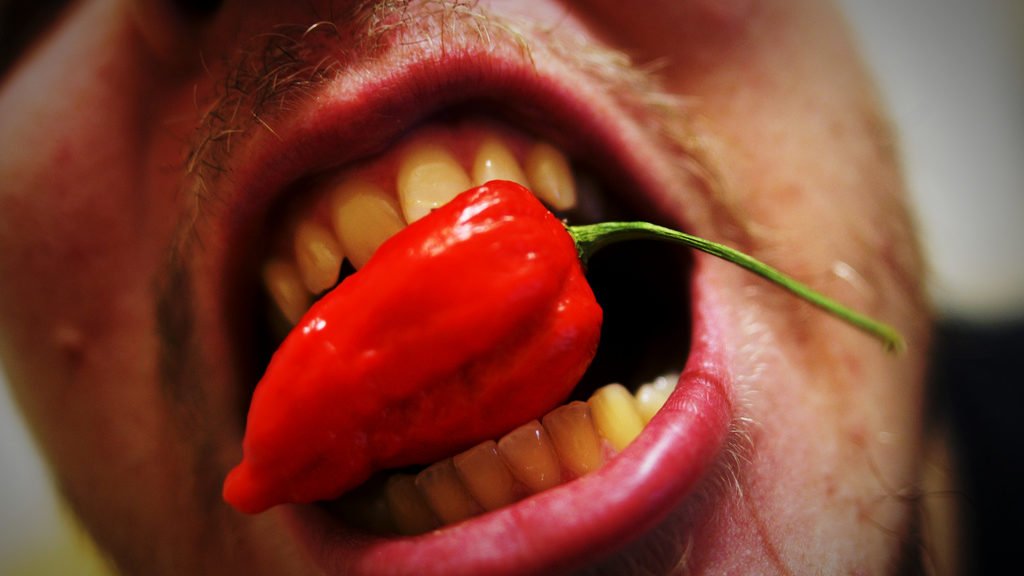In recent years, hot pepper eating challenges have popped up in many places around the world, attracting a cult-like following.
Challenge participants are looking to see if they can handle eating some of the world’s hottest peppers.

Carolina Reaper pepper pods harvested in November 2013 in West Valley City, Utah. (Dale Thurber, Creative Commons Attribution-Share Alike 3.0 Unported via Wikimedia Commons)
A new study, published in the journal BMJ Case Stories, provides an account of one man who wound up in the hospital after eating a ‘Carolina Reaper’, considered by many to be among the world’s hottest peppers.
The Scoville scale is the commonly accepted method for measuring a pepper’s ‘hotness’.
The pungency of a pepper is reported in Scoville Heat Units (SHU). A bell pepper registers at zero SHU while the jalapeno pepper can be a few thousand to over 10,000 SHU.
Meanwhile, the pepper in this instance, the ‘Carolina Reaper’ as measured in 2013 for an official Guinness World Record came in with a heat level 1,569,300 SHU.
The man’s physical issues began soon after eating the pepper. First, he began to retch violently, then he developed severe neck pain and a series of brief (lasting a few seconds each) but painful headaches over the following several days.
When the severe headaches continued, the paper indicates that’s when he sought emergency care.
He was tested for various neurological conditions, but they all came back negative.
However, a CT (computed tomography) scan indicated that several arteries in his brain had narrowed.
This drove his doctors to diagnose him with a thunderclap headache secondary to reversible cerebral vasoconstriction syndrome (RCVS).

A display of hot peppers and a board explaining the Scoville scale at the H-E-B Central Market location in Houston, Texas – Art by Lisa Stewart (Public Domain/Wikimedia Commons)
It’s said that this condition can also stem from a reaction to certain types of prescription medication as well as illegal drugs.
The study authors claim that this was the first case of RCVS to be associated with eating chili peppers.
This story did have a happy ending with the researchers saying the man’s symptoms did clear-up by themselves and a follow-up CT scan taken five weeks after the incident indicated that the patient’s brain arteries had returned to their normal width.

























Comments are closed.